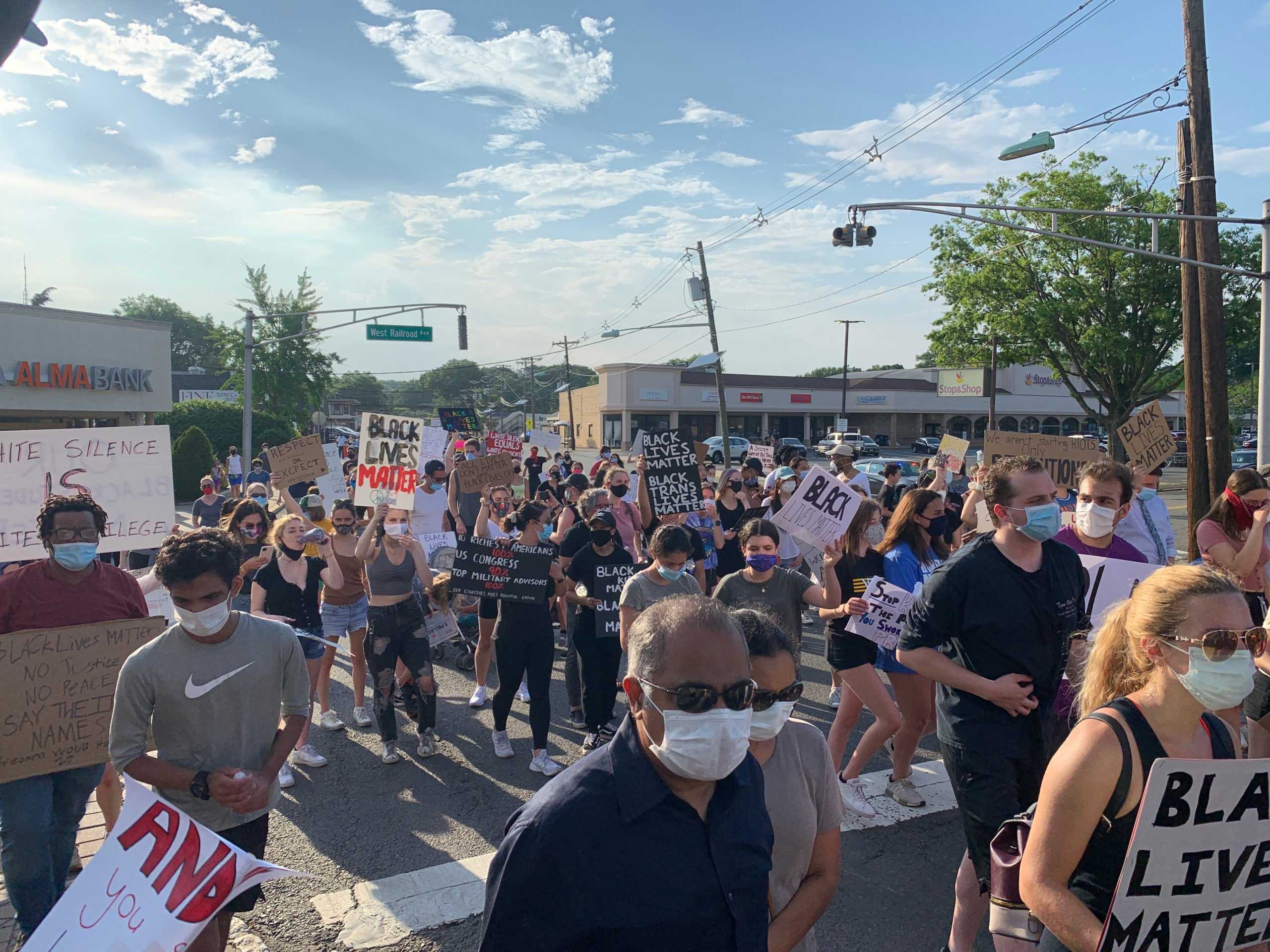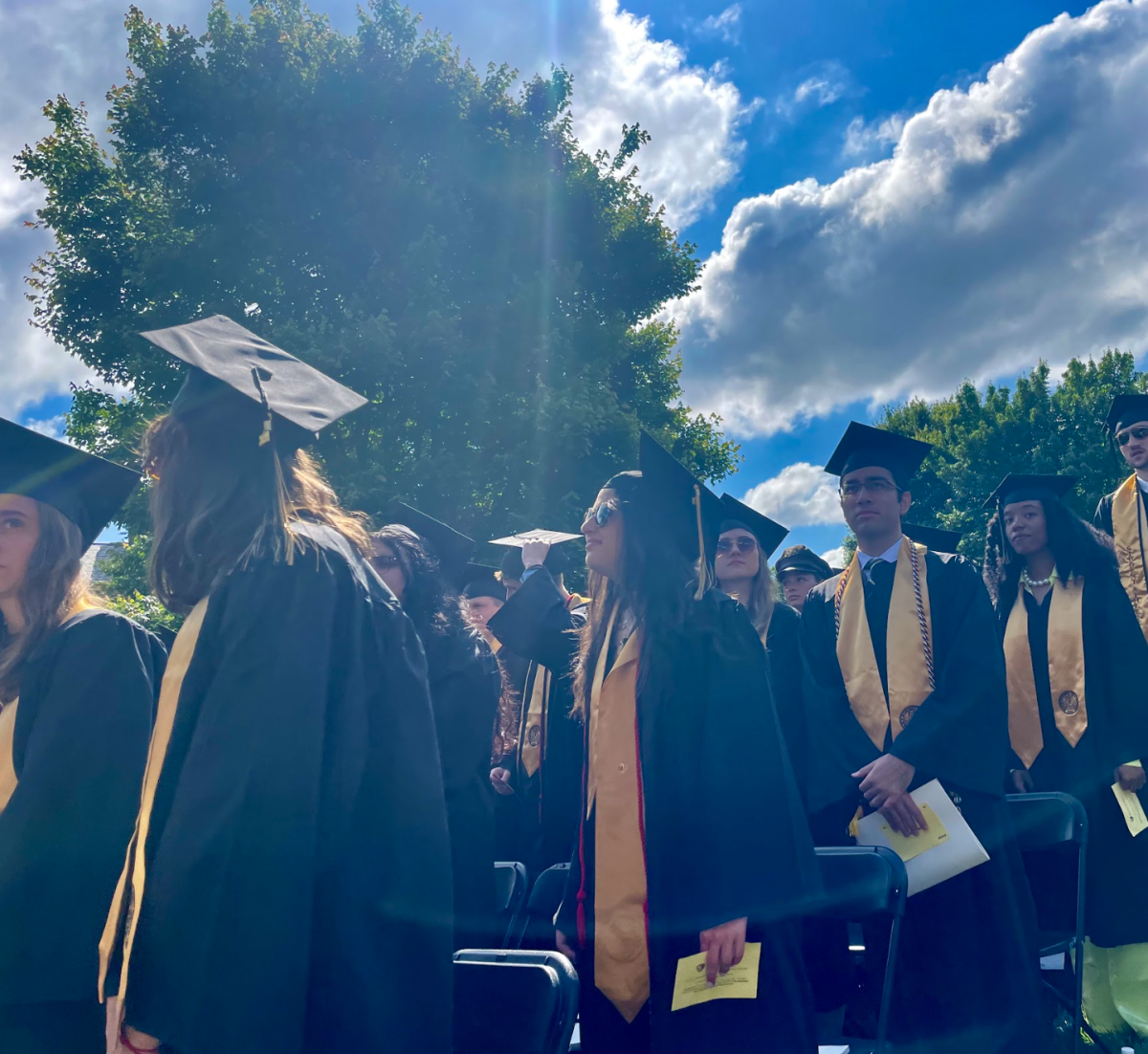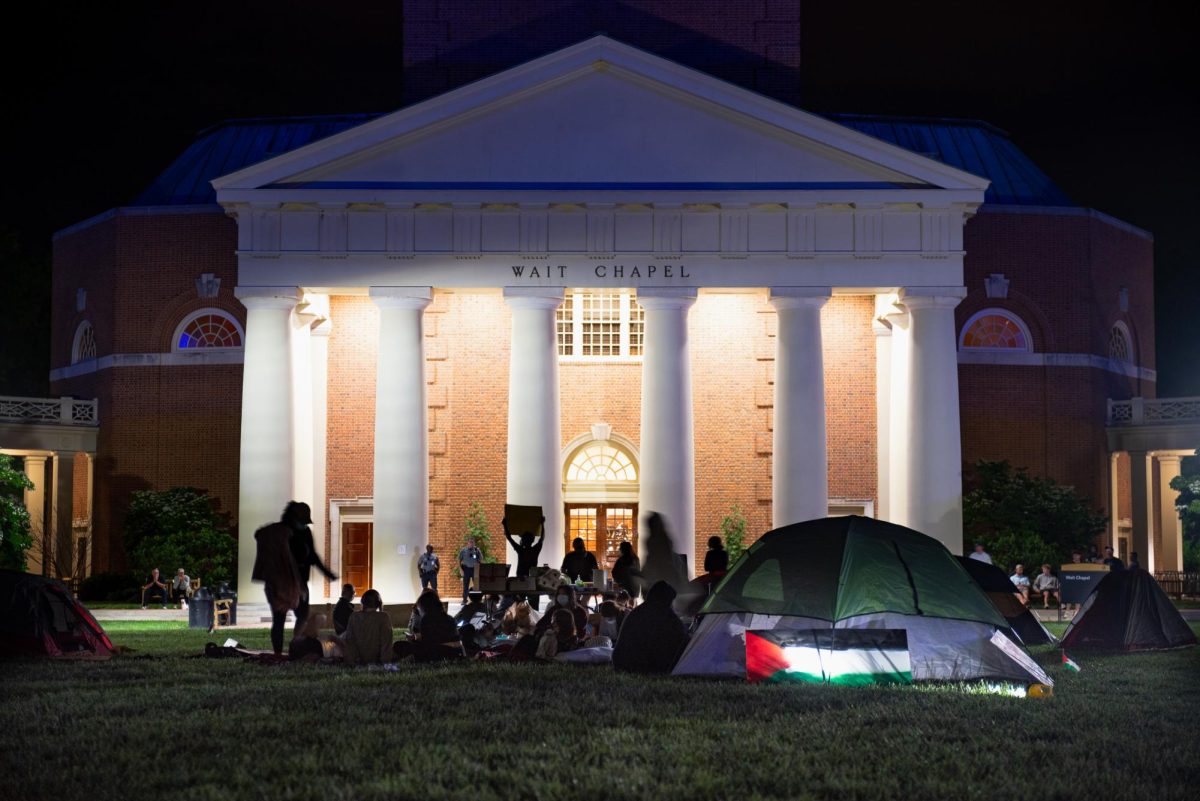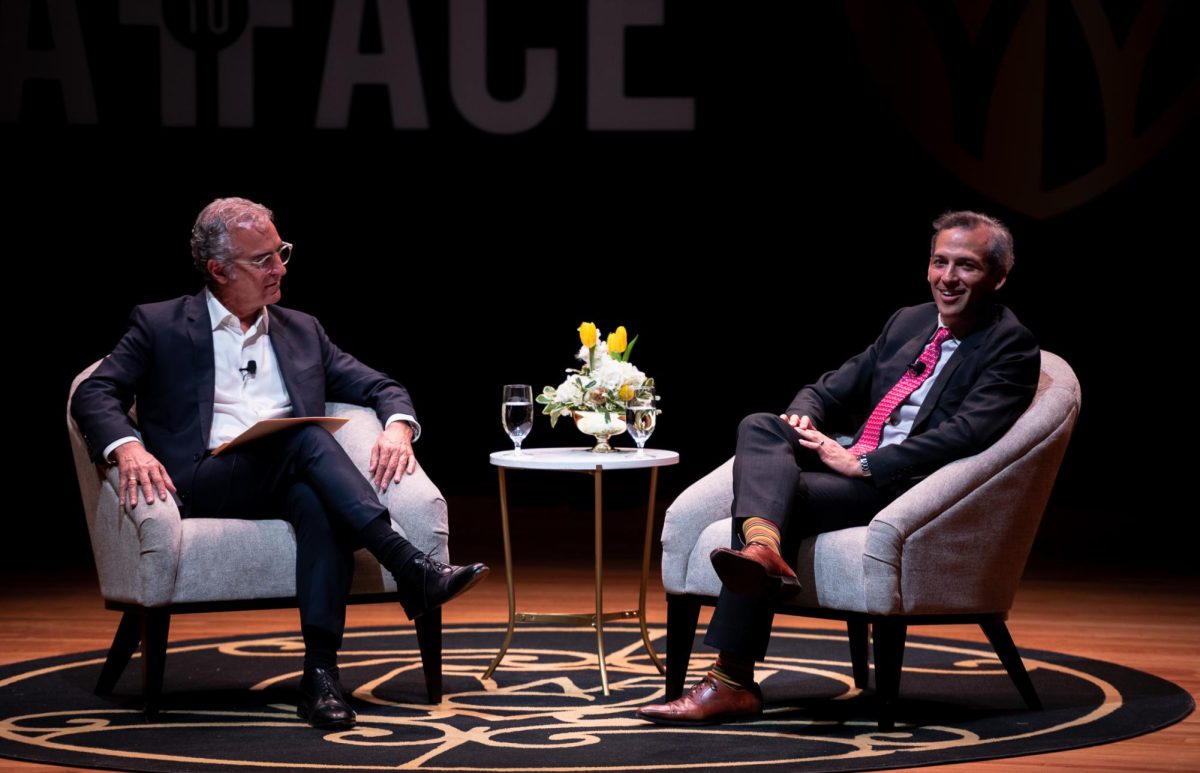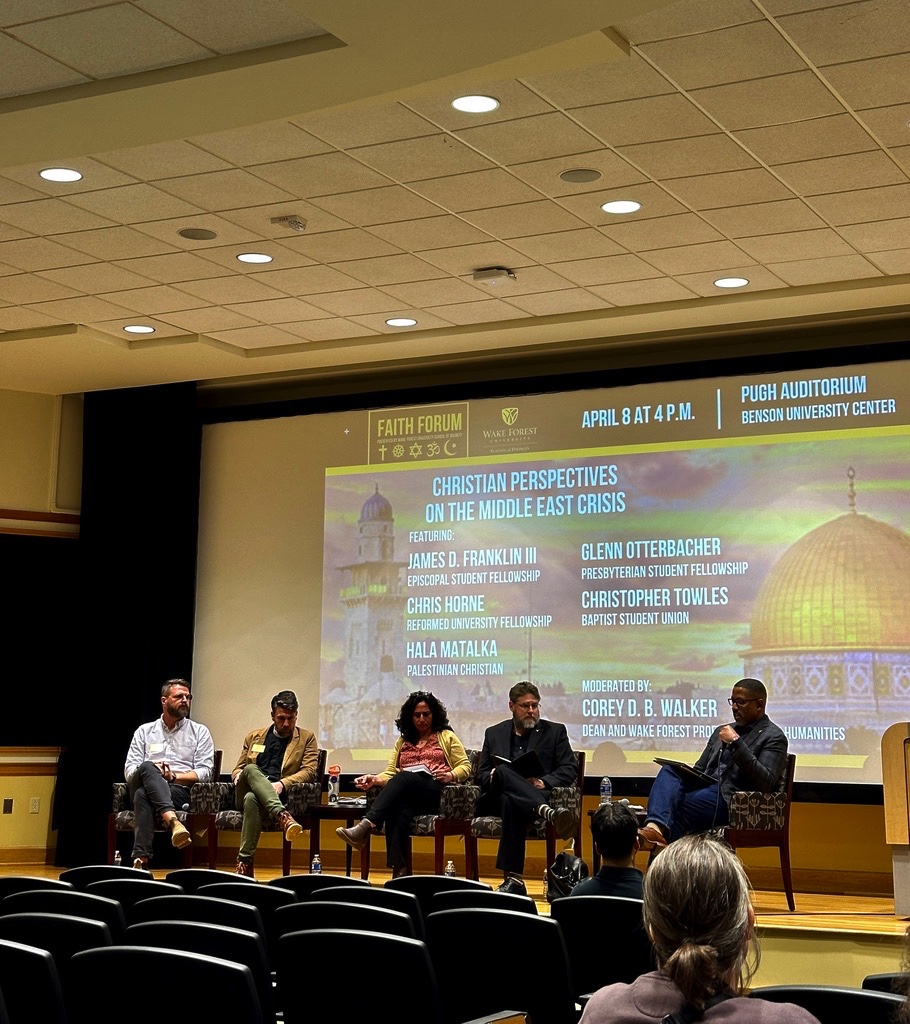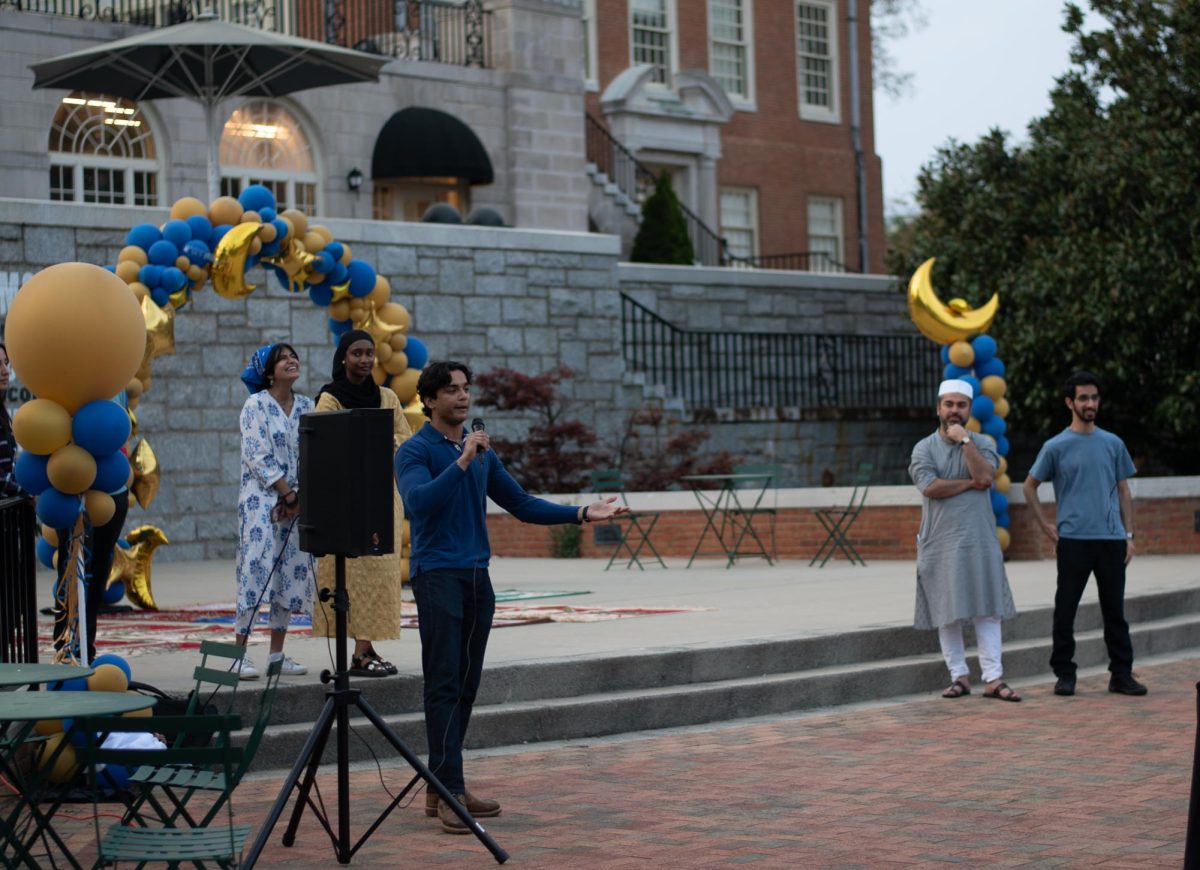“That day, I observed the principles of pro humanitate in action.”
This is what senior Eric Mundy said of his experience protesting in Greensboro, NC during the first week of June. Less than an hour drive from campus, Mundy said LeBauer Park was filled with thousands of peaceful protesters sharing art, poetry and music.
Now, almost a month after George Floyd was killed at the hands of police in Minneapolis, protests in support of the Black Lives Matter movement are still taking place in cities across the country — and Wake Forest students are participating.
Alongside three friends, senior Logan Bolton organized a protest in her hometown of Fayetteville, Ga. After noticing how powerful the rallies in Atlanta were, Bolton knew that she had to organize a similar event in Fayetteville — a predominantly white city that is no stranger to police brutality, according to Bolton. Not only did the mayor and police chief agree to the event, said Bolton, but city and state officials attended and spoke at the rally.
“It was so empowering to know that I was actually working to make a change instead of just talking about these injustices,” Bolton said. “Estimated attendance was [more than] 3,000, and there were also hundreds of people honking their car horns, passing out waters on the side of the road and holding up signs from their front yards in solidarity. It filled my heart to see our community show out the way they did.”
After seeing pictures and videos of protests on social media, junior Merry Kebede knew that she needed to experience protesting first-hand.
“While I did post on social media, sign petitions and donate, it was only once I went to the protest and walked with all the protesters, that I felt as if I had physically done something to contribute to the movement,” Kebede said.
Having attended the protest in Washington, D.C., Kebede noted that the nation’s capital is especially symbolic of the partisan divide created in this country — which she believes has only been heightened in the era of “Trump politics.”
“I went to the protest the day after they had painted ‘Black Lives Matter’ on the street, as well as replaced 16th street with ‘Black Lives Matter Street.” It felt as if everyone from the DMV area was gathered there protesting and marching, but there were also other people who chose this opportunity to hold up signs that not only belittled the BLM movement, but other matters such as feminism,” Kebede said. “It was such a weird feeling seeing this united front and then turning the corner and seeing this divide in beliefs.”
Senior Ana Paola Rubio felt a similar desire to put her thoughts and words into action, and decided to attend a protest in San Diego. While Rubio said that the protests were peaceful, and anyone trying to incite violence was quickly shut down by fellow attendees, the crowd was still tear gassed by police with no warning. This has been a common theme in protests across the country, which Rubio notes as a “pattern of police being the instigators of violence at protests.” Even more alarming, Rubio saw a civilian truck attempt to run over protestors and saw others throwing rocks at attendees.
“This protest happened in La Mesa, Calif. — a small, quiet and old neighborhood in San Diego County,” Rubio said. “It was the first but it was loud and bold, so I think that goes to show that even the smallest places are desperate for change.”
While marching with her family in Manhattan, junior Leilani Fletcher said she was moved by the overwhelming passion shared by the crowd and noted that it was the “most empowering protest” she’s ever participated in.
“I decided to attend the protest because I feel that it is my duty as an activist; it is critical that I uplift marginalized voices,” Fletcher said. “Also, as a Black queer woman, I have felt very drained during these times, so I thought it would be energizing and powerful to go to a protest by being in community with other passionate people.”
Mundy, who attended the Greensboro protest, explained that the experience was especially “uplifting and cathartic,” because it reminded him that young people are still at the helm of movements like Black Lives Matter.
“As a Black Wake Forest student, oftentimes you realize that matters of social justice, especially racial equity, are completely avoided or skirted around in conversation. In general, at Wake [Forest], social and political activism are a rare sight and for that reason, it was really a great privilege to attend the protests in Greensboro,” Mundy said.
He continued: “I don’t think it’s a secret that many things need to change at Wake Forest. The university has long had a history of being lenient towards and tolerant of frequent, recurring incidents of racism. Having been a member of Greek Life, over the past few years, I’ve witnessed and have been subject to acts of racism and microaggressions in spaces where many white students feel liberated enough to spew prejudice and hate-filled rhetoric.”
“In these instances, what cultivates an atmosphere of invincibility among white students are the unwritten assurances that they will get away with it. As for how the BLM movement relates to Wake [Forest], I hope and believe it serves as a quintessential example to not only the student body, but also the administration, that tolerance of acts that perpetuate America’s long-standing oppression of minorities will no longer be a motif in the chapters our generation will write in the history books,” Mundy said.
The connection between the current national conversation and Wake Forest’s own campus is not lost on Bolton, either.
“I am so incredibly tired of Wake Forest administrators sending essay-long emails about real issues in our community and thinking they’ve solved something. The black community is hurting. We need action. I would like to see more intentional education on police brutality, implicit bias, white privilege and systematic racism for every Wake Forest student, but especially non-black individuals,” she said. “It is not enough to just provide ‘thoughts and prayers’ and express solidarity. It is not enough to not be racist. One has to be anti-racist, which entails putting in the extra work to undo decades of prejudice in society, but especially at a predominantly white institution like Wake Forest.”
Bolton and Mundy’s recognition of the need for tangible change, alongside many other students at Wake Forest, has been acknowledged by the university. Last week, President Hatch shared the findings of the Commission on Race, Equity, and Community — which includes 20 points of action to address the systemic racism present at Wake Forest. Beginning in September, task forces will be working to implement the advice presented by the commission. More directly related to police brutality, the Wake Forest University Police Advisory Board recently organized to include two students to serve on the board. So, as the fall nears closer, the desire for change among students of color may begin to be fulfilled by the university. Until then, however, personal action is the most prudent option available for students.
“The protest have shown that blissful ignorance is no longer an option, something Wake Forest and most of its students have reveled in for decades,” Rubio said. “Today, you can’t claim to not know the system was built to oppress. Either you are actively anti-racist, actively working to reconstruct your mindset, or you’re contributing to an unjust society — it’s as simple as that.”

